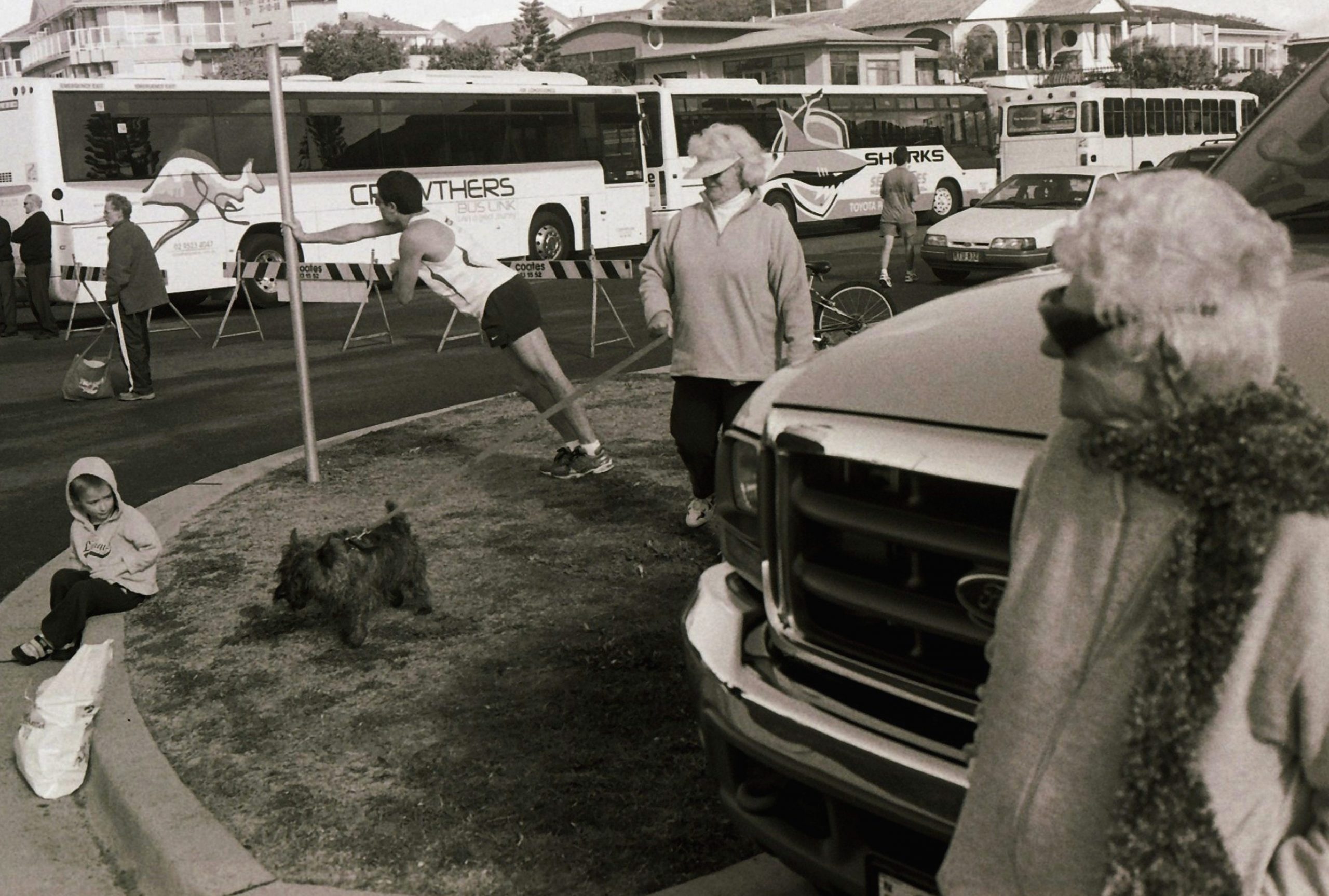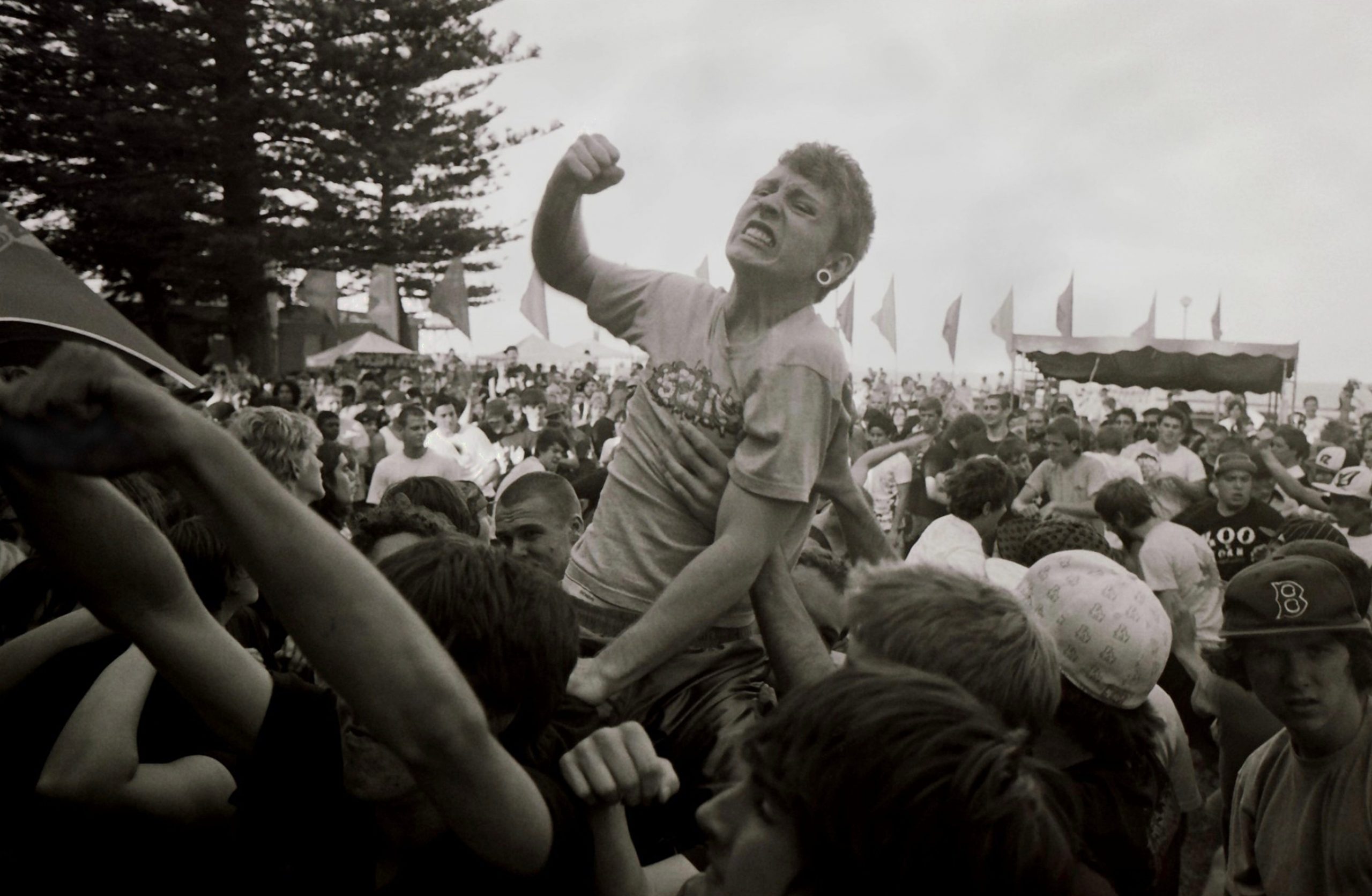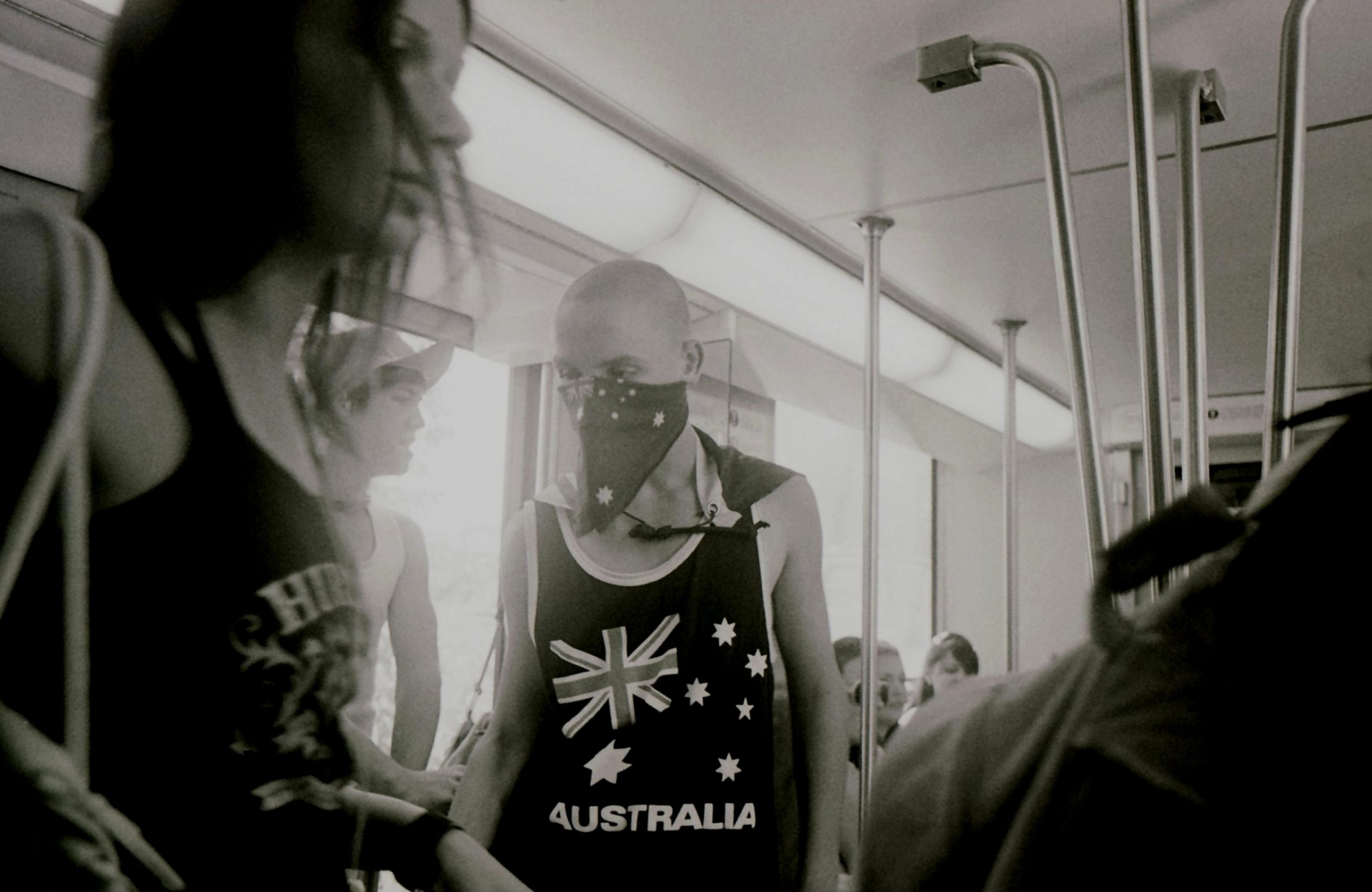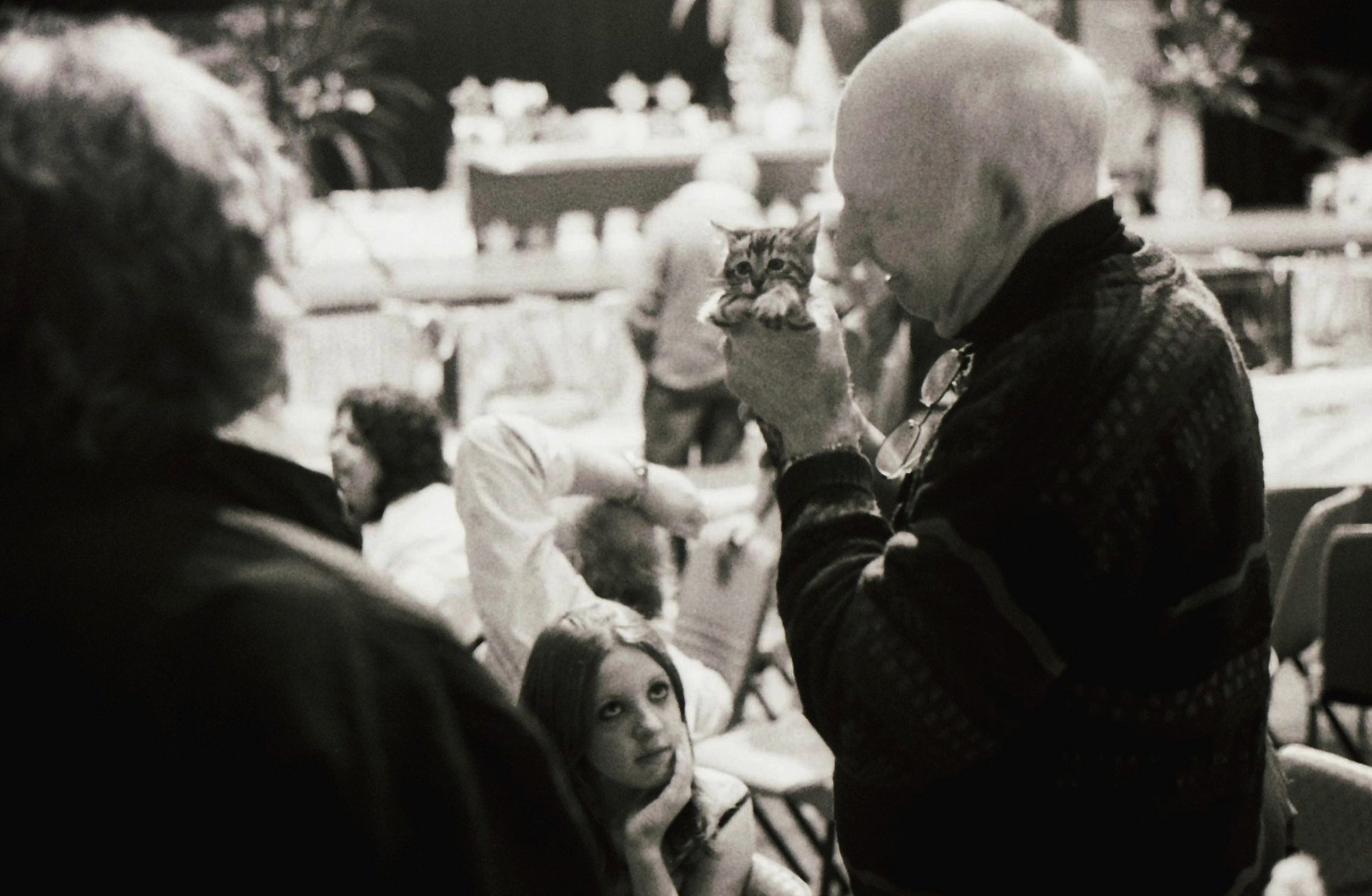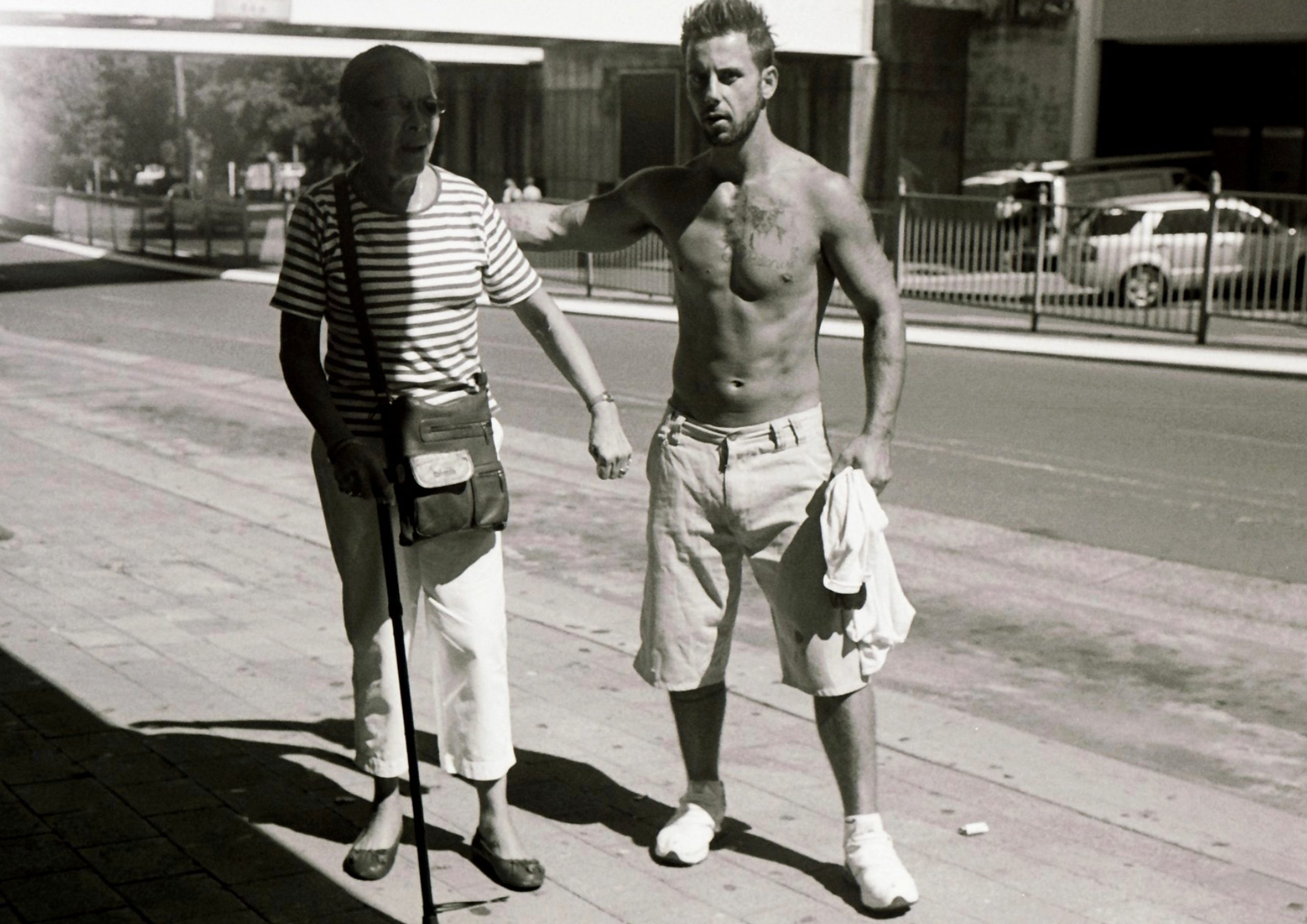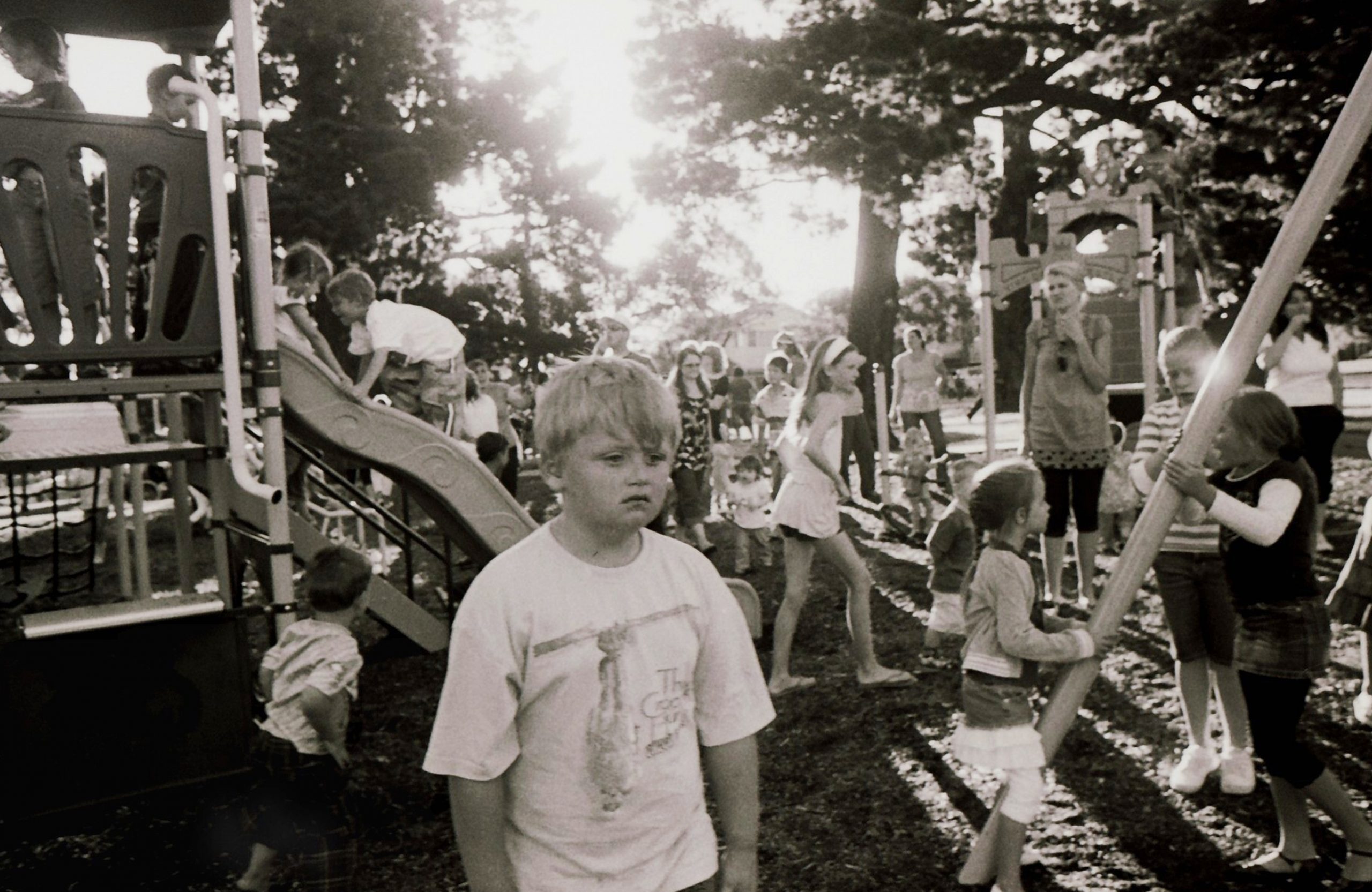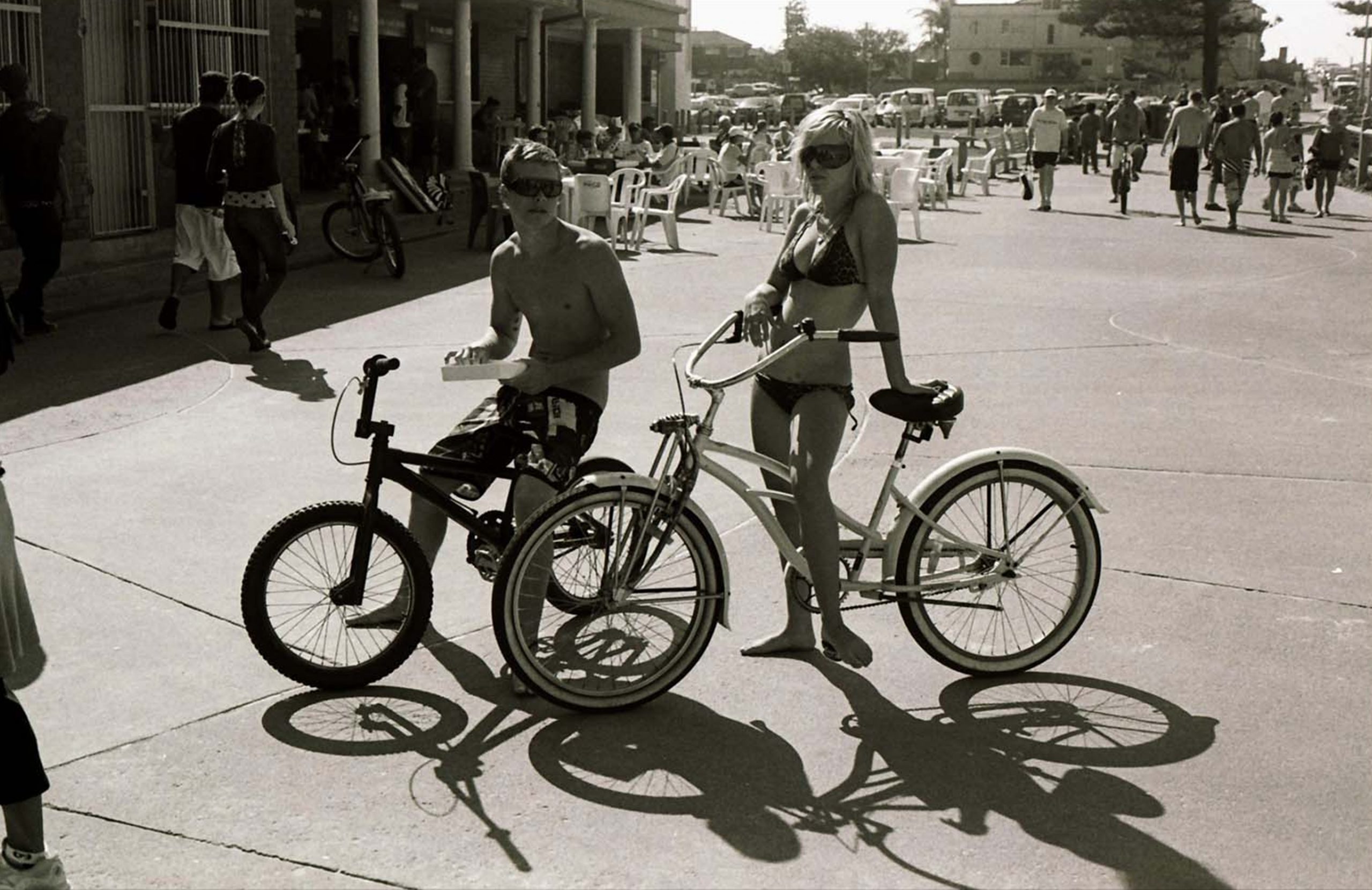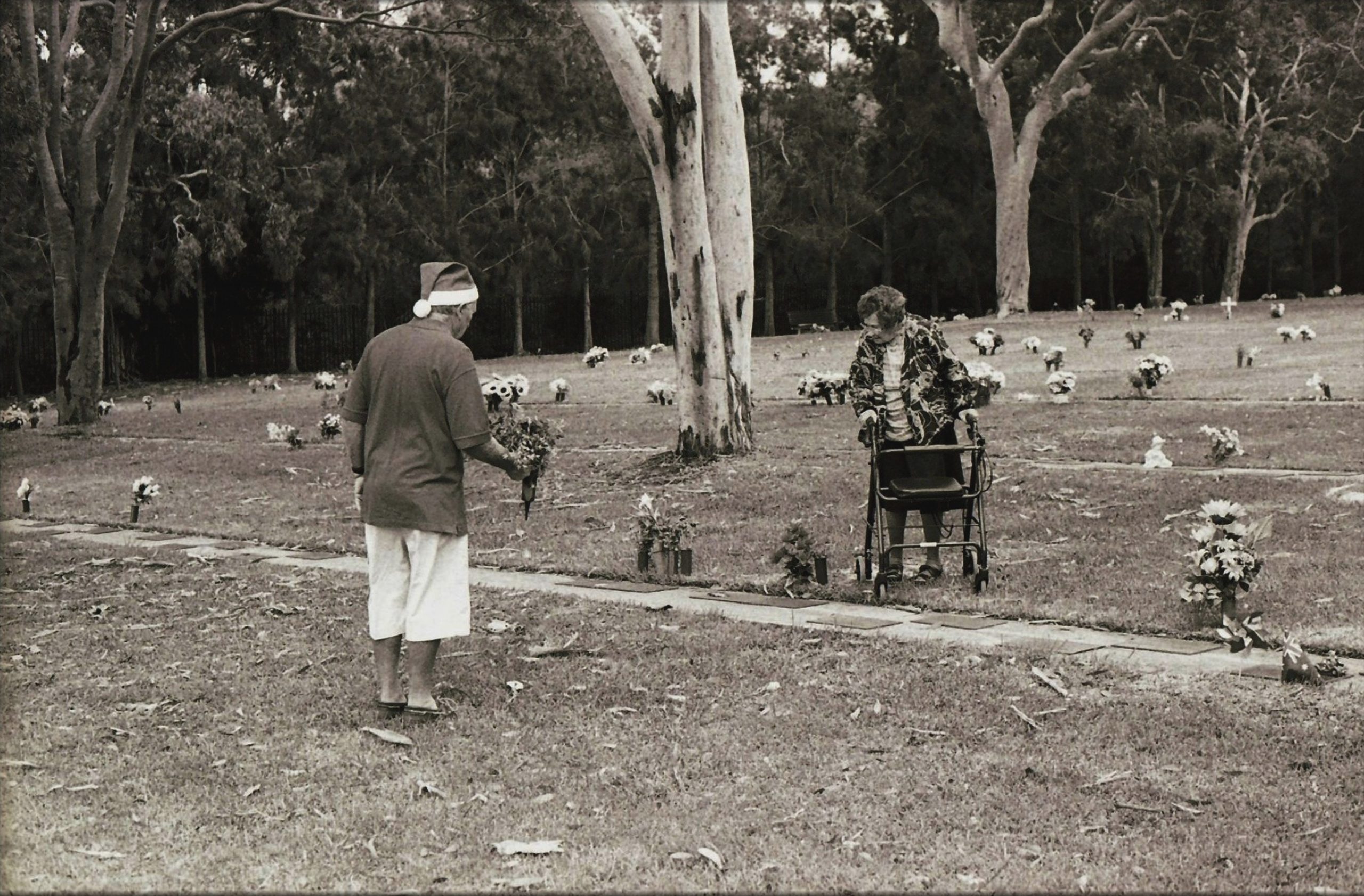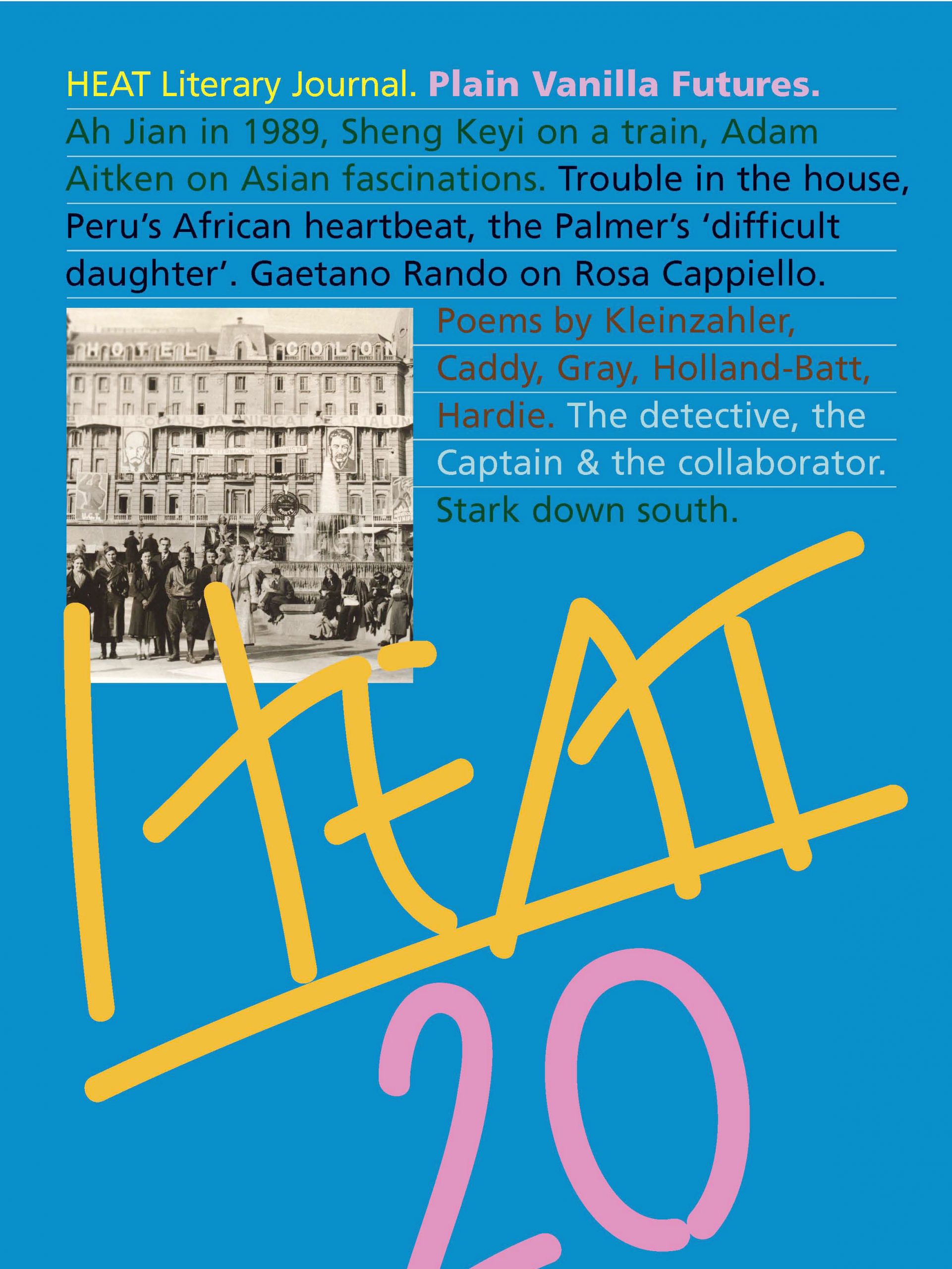Down South

Street photographer Andrew Stark has been documenting Sydney in gritty and grainy 35mm black and white for over twenty years. From 1983 to 2003 Stark wandered around urban and suburban Sydney, photographing scenes from the theatre of the street with a temperamental Konica camera: the outcome was self-published as Snaps from Sydney (2003) and shown at the Museum of Sydney (September 2006–February 2007). A long-term resident of the Sutherland Shire in Sydney’s southern region, Stark was commissioned by Hazelhurst Regional Gallery and Arts Centre at Gymea to ‘shoot the Shire’ over a period of a year. The result of his observations and interventions – Down South: A Stark View of the Sutherland Shire – is a body of work that captures fleeting moments that unfold in public spaces. It was presented at the gallery in August 2008.
Travelling with a secondhand SLR film camera, on public transport and on foot, Stark offers candid, poetic and razor-sharp observations of the everyday machinations of the birthplace of modern Australia. The iconic beauty of Shire beaches and landscapes feature prominently, but it is the idiosyncratic depiction of people occupying these spaces that Stark conveys so honestly. Whether depictions of people going about their daily rituals and routines, enjoying downtime and recreation, or participating in publicly staged community events, Stark reveals with perceptive insight and wry humour the diverse cultural and social ideologies that animate how we behave and interact in public places.
Always working without physically interfering or approaching his subjects, Stark maintains that street photography must be underscored by a notion of ‘photographic truth’. To mediate a relationship between the photographer and subject in this context would make the work appear contrived or orchestrated, and undermine the authenticity of the image. Paradoxically, this concept of authenticity depends on the repetition of a working methodology, of non-interference. The carefully managed process of shooting private moments performed in public fabricates pictorial authenticity through subjective framing, cropping and selection – revealing how the truth value of street photography is connotative and rarely neutral. In Street Photography: From Atget to Cartier-Bresson (2007) Clive Scott notes that unlike documentary photography, ‘street photography is not an amplified language’ and is characterised by ‘ironic amusement, a simulated disbelief, an affectionate disownment’. Stark is part of the community being documented, but apart from it as a detached observer – a surreptitious flâneur on the lookout for Cartier-Bresson’s ‘decisive moment’. Through selection and sequencing, the truth imperatives of the images and their subjects – their indexical trace to a regional referent – merge with suggestions of narrative, irony and authorial commentary.
As a street photographer working in an age where the ethics of privacy and surveillance are contentious issues, Stark’s process of documenting the Shire reveals the mixed responses people have when photographed in public. In an interview for local newspaper The Leader (28 August 2008) in anticipation of the exhibition, Stark commented on some of the negative responses he received from members of the public about being photographed: ‘There is a shift everywhere in people’s attitudes. There is a lot more aggression and people seem to think you are up to no good’. Stark speculated that the suspicion greeting him when ‘caught’ photographing people in public, could be put down to 9/11, the Cronulla riots, and the recent moral panic over Bill Henson’s photography. After The Leader received and printed a negative letter to the editor about whether Stark had the right to photograph people without their permission, the artist claimed: ‘Having pursued [street photography] for 25 years…I find it fascinating that only in recent times has the public become so overtly hostile towards any middle-aged man wielding a camera’ (23 September 2008).
The shadow of the Cronulla riots of December 2005 is certainly felt in several images where crowds of white youth are captured at the beach, many garbed in board shorts, t-shirts and towels depicting the Australian flag. The beach remains a contested, territorialised space in some photographs – an unsettling reminder of the riots – while in others it is a beacon of the racial, socio-economic and generational diversity that is increasingly characterising the region.
With Stark’s unique vision, the most ordinary of locations – train stations, cemeteries, quiet suburban streets, churches, parks and cafés – and the most ordinary social settings – the performance of friendship, of family relations – take on a multiplicity of meanings that seem both universal and regionally specific. From Heathcote to Gymea, Kurnell to Waterfall, the parts of Stark’s ‘stark’ black and white vision of the Sutherland Shire crystallise, forming a rich, complex and distinct contemporary Australian neighborhood. —Daniel Mudie Cunningham
